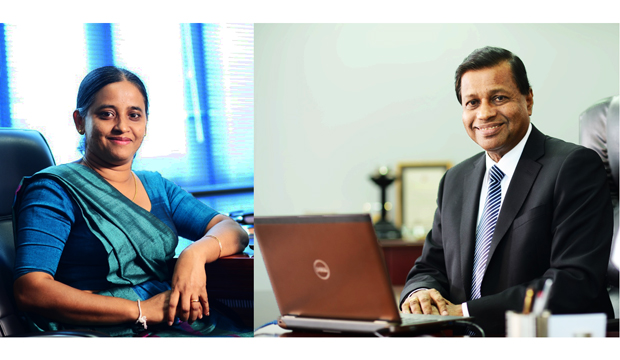December, 22, 2015

SANASA Development Bank PLC (SDB) has succeeded in posting a 59% growth in profit after tax (PAT) to Rs. 166.1 million for the quarter ended September 30, 2015. As a result, the bank’s PAT for nine months ended September 30, 2015 has increased by 84% year-on-year (YOY) to Rs. 579.8 million. Since 4Q2014, this is the fourth consecutive quarter where the bank has increased the PAT over and above 80% YOY demonstrating the consistency in its performance. The above average loan book growth, healthy margins and below industry average non-performing loan (NPL) position contributed immensely for healthy profitability levels.
Since 4Q2014, the above industry average loan book growth was a notable feature in SDB and during the nine months ended September 30, 2015 the loan portfolio grew by 35% and ended up at Rs. 43.1 billion. Total deposits grew by 26% to Rs. 39.4 billion as of September 30, 2015. This is a testament to the efforts made by the management to provide a high quality service to customers, as well as to the trust placed in the Bank by the latter.
Core-banking activities made a steady progress under challenging economic conditions and the net interest income (NII) rose by 46% YOY to Rs. 2.4 billion during nine months ended September 30, 2015 largely due to growth in interest income by 36.18% YoY to Rs. 4.8 billion. This was mainly due to the healthy 70% YOY growth in loan book and at the same time interest expenses rose only by 27% YoY. Amidst pressure on banking sector margins, SDB managed to maintain an unimpaired, above industry average net interest margin (NIM) of 7% throughout the year largely supported by the prudent reprising and diligent asset liability management functions.
Over the past nine months special effort has been taken by the bank to diversifying its income sources. As a result the fee based income of the bank showed a remarkable improvement. As at September 30, 2015 the net fee and commission of the bank rose by 30% YOY to a healthy Rs.188 million led by the growth in income from lending and other fee based services provided by the bank. As a whole, bank’s total operating income grew by 41% YOY to Rs. 2.7 billion.
Despite the increase in operating costs, the bank continued to bring down its cost to income ratio to 54.98% from 62.05%in December 2014, by way of process improvements. Further, the increase in staff cadre is an investment made by bank for its future expansion plans. This was reflected in increase in personnel expenses by 42% during the period under review.
Return on Assets has increased from 2.14% on 31st December 2014 to 2.63% at the end of the third quarter of 2015. Return on Equity is currently at 15.36%, which is an improvement on the 12.01% recorded on 31st December 2014. The Bank has always maintained the liquidity ratio above the 20% minimum regulatory requirement. The bank has further improved its asset quality as both its gross and net non-performing loan ratios declined to 2.95% and 0.37% respectively from 3.76% and 1.73% in December 2014. These results demonstrate the successful performance of SANASA Development Bank during Q3 of 2015.
SDB recorded some significant milestones during 3Q2015. Total capital base rose by 8.23% since December 2014 to reach the CBSL required minimum capital requirement of Rs. 5 billion as at 30th September 2015. Further, on its way to Rs.100 billion balance sheet SDB managed to post a balance sheet growth of 30% during the first nine months of 2015 and ended up the 3Q2015 with a total asset base of Rs.50 billion. In achieving these milestones, the core banking and leasing segments made notable contribution. Apart from that, these landmark achievements would not have been possible if not for the strategic support received from treasury division and the persistent commitment of staff members.
Capital adequacy levels, both Tier I and Tier II ratios remained at 11.89% and 12.40% respectively by the end of third quarter of 2015. Both these ratios are well above the regulatory minimum of 5% and 10% stipulated by the Central Bank of Sri Lanka.
Having begun operations in 1997, SDB played a pivotal role in microfinance sector over last 18 years. Bank is now ready to graduate its existing micro client base to the next level, which is Small and Medium Scale Enterprise level (SME). For this transformation process, SDB entered into a two year business process reengineering plan with its long term strategic advisory partner, International Finance Corporation (IFC). With this exercise, over the course of next two years SDB intends to strengthen its overall operational capabilities and risk management framework to better equip SDB for its transformation into a SME and co-operative retail bank. This transformation would place SDB in a position to compete with larger players in the financial services sector. Hence in coming year’s bank will be well positioned to reach greater achievements.
Photo caption: Mrs. Samadanie Kiriwandeniya, Chairperson of SDB (left) and Mr. Nimal C. Hapuarachchi, General Manager/ CEO of SDB
Video Story